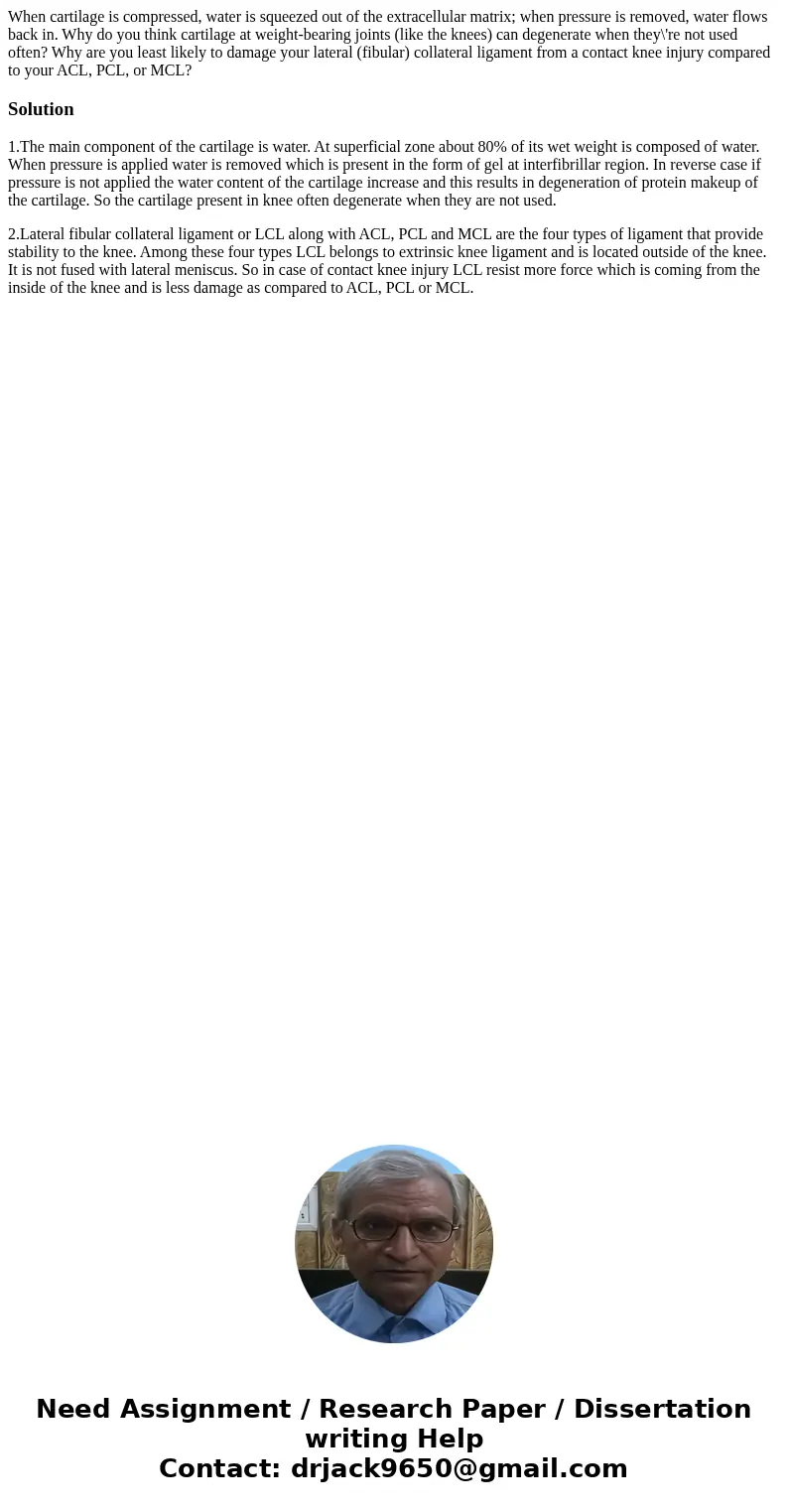When cartilage is compressed water is squeezed out of the ex
Solution
1.The main component of the cartilage is water. At superficial zone about 80% of its wet weight is composed of water. When pressure is applied water is removed which is present in the form of gel at interfibrillar region. In reverse case if pressure is not applied the water content of the cartilage increase and this results in degeneration of protein makeup of the cartilage. So the cartilage present in knee often degenerate when they are not used.
2.Lateral fibular collateral ligament or LCL along with ACL, PCL and MCL are the four types of ligament that provide stability to the knee. Among these four types LCL belongs to extrinsic knee ligament and is located outside of the knee. It is not fused with lateral meniscus. So in case of contact knee injury LCL resist more force which is coming from the inside of the knee and is less damage as compared to ACL, PCL or MCL.

 Homework Sourse
Homework Sourse